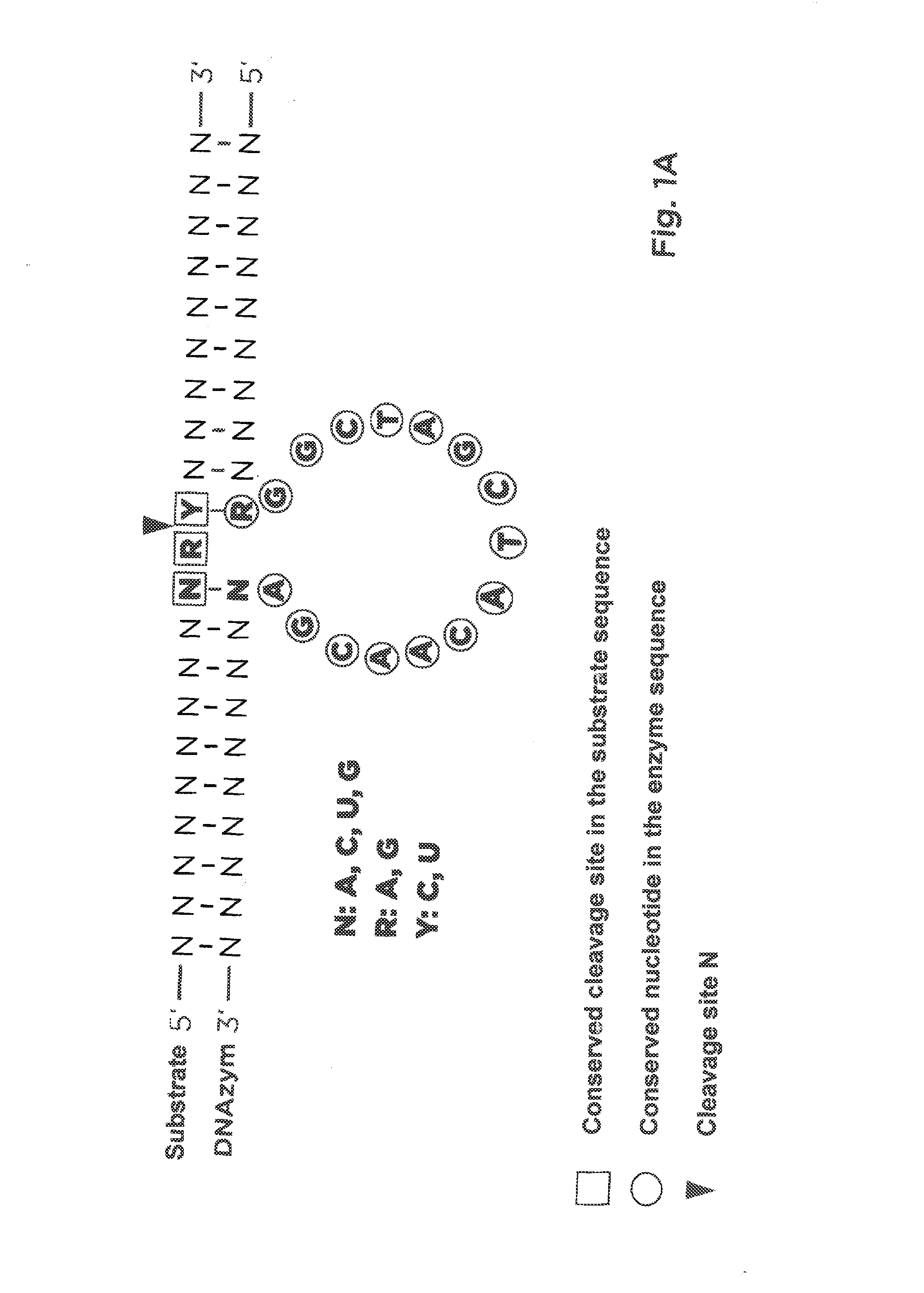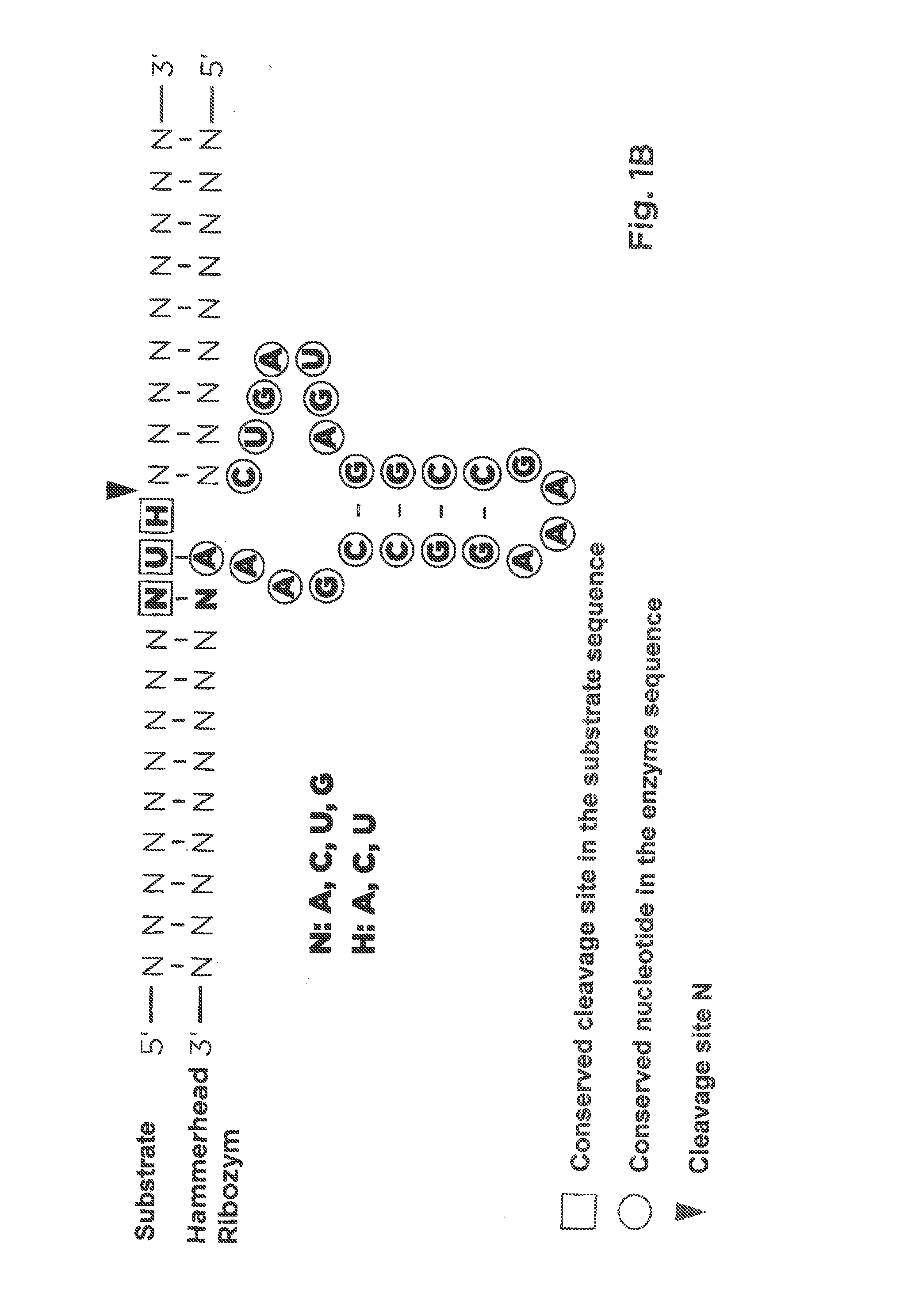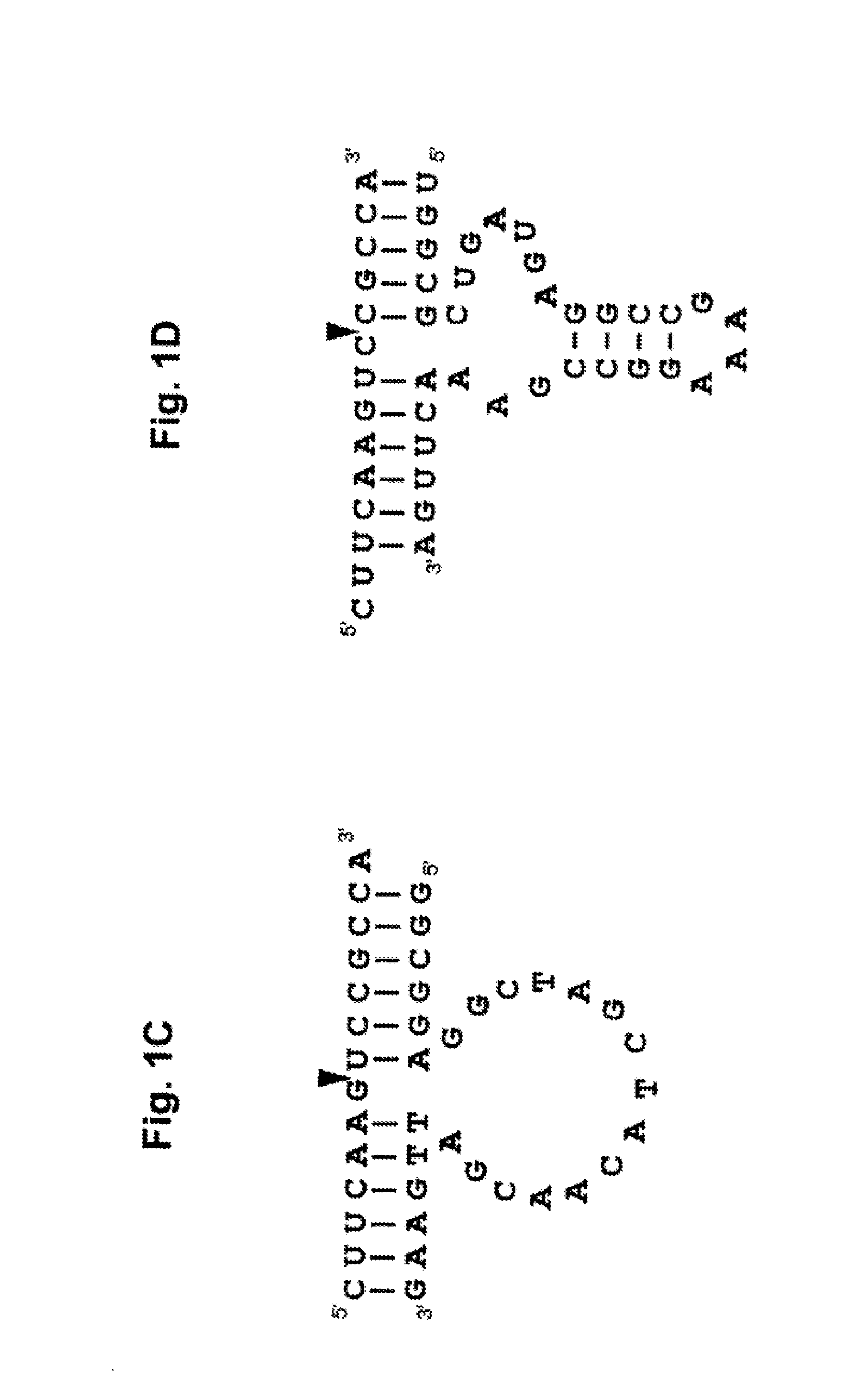Pharmaceutical composition containing l-dna
a technology of l-dna and pharmaceutical composition, which is applied in the field of pharmaceutical composition comprising an ldna, can solve the problems of unfavorable pharmacokinetics, rapid degradation, and inability to completely eliminate side effects of l-nucleic acids in organisms, and achieve advantageous pharmacokinetic properties, stable against enzymatic degradation, and enhanced cell reception
- Summary
- Abstract
- Description
- Claims
- Application Information
AI Technical Summary
Benefits of technology
Problems solved by technology
Method used
Image
Examples
example 1
Cleavage Assay
[0063]The activities of L-ribozymes and D-ribozymes were measured under different conditions. The basic conditions were as follows. 0.2 μM target RNA or DNA were mixed with 10 μl reaction mixture in the presence of 2 μM DNAzyme or RNAzyme in 50 mM tris-HCl buffer, pH 7.5, incubated at 20° C. for 2 hours (ratio DNAzymes or RNAzyme / target hence 10:1). Before the reaction, target RNA or DNA and DNAzyme or RNAzyme were denatured for 2 minutes at 72° C. and slowly cooled down to 25° C. (1° C / min.) in the heating block. The influence of Mg++ ions in concentrations from 0.1 to 10 mM was investigated. Cleavage products were separated on 20% polyacrylamide gel electrophoresis in presence of 7M urea in 0.09 tris-borate buffer, pH 8.3. The analysis of the fluorescence was performed on Phosphoimager Fuji film FLA 5100. The data were obtained using the Fuji Analysis Program. Diagrams were created with Excel.
example 2
Preparation of the Target Sequences and the Ribozymes
[0064]The target sequences were prepared by way of chemical synthesis. The synthesis products had a purity of more than 90%.
[0065]As DNAzyme or RNAzyme sequences were selected, according to the target sequences, the variable regions of the DNAzyme or RNAzyme at the cutting site triplet, and the RNAzyme or DNAzyme sequences were synthetically prepared. The synthesis products had a purity of over 85%.
[0066]All synthesized products were marked with fluorescein at the 5′ end.
example 3
Measurement of Activities in Cells
[0067]HeLa cells were transfected with 1 μg EGFP plasmid according to instructions. Then followed an incubation with 25, 50 or 100 nM solution of the DNAzyme or RNAzyme to be used. After 24 h or 48 h, the cells were analyzed with a Leica microscope, or the fluorescence intensity (RFU) was measured according to instructions using the Multi-mode Microplate Reader Synergy-2.
PUM
| Property | Measurement | Unit |
|---|---|---|
| pH | aaaaa | aaaaa |
| nucleic acid libraries | aaaaa | aaaaa |
| radioactive | aaaaa | aaaaa |
Abstract
Description
Claims
Application Information
 Login to View More
Login to View More - R&D
- Intellectual Property
- Life Sciences
- Materials
- Tech Scout
- Unparalleled Data Quality
- Higher Quality Content
- 60% Fewer Hallucinations
Browse by: Latest US Patents, China's latest patents, Technical Efficacy Thesaurus, Application Domain, Technology Topic, Popular Technical Reports.
© 2025 PatSnap. All rights reserved.Legal|Privacy policy|Modern Slavery Act Transparency Statement|Sitemap|About US| Contact US: help@patsnap.com



